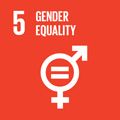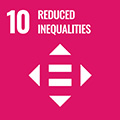- Docente: Andrea Gaucci
- Credits: 6
- SSD: L-ANT/06
- Language: Italian
- Teaching Mode: Traditional lectures
- Campus: Bologna
- Corso: Second cycle degree programme (LM) in Archaeology and Cultures of the Ancient World (cod. 8855)
Learning outcomes
At the end of the course, the student will learn the general lines on the formation and development of the peoples of Preroman Italy, also with reference to mutual processes of cultural integration; he will thus develop the ability to carry out research on the subject, thanks to the use of the specific methods and tools of the discipline, and the ability to communicate the results of such research both in oral and written form. The student will be able to critically insert the archaeological documentation and the literary and epigraphic sources in their respective social, economic and political contexts; he will also be able to insert these documents in the framework of the history of the Italic peoples and of the presence and spread of the Celtic culture in Italy, also in light of the relations with the transalpine area.
Course contents
The course deals with the specific theme of the Italic and Celtic cultures of pre-Roman Italy, in both a historical and archaeological perspective. The differentiated development of settlements, funeral rituals, mobility of individuals and groups, commercial and cultural flows between the Mediterranean and transalpine world will be deepened.
The first lesson will illustrate the program, the assessment methods and to offer a general picture of the history of studies and survey methods.
The rest of the course includes a general part, followed by an in-depth one.
The general part will begin with a reference to the theoretical issues and to the problem of the relationship between the subdivision of Augustus' Italy into the Regiones and the pre-Roman civilizations; the latter will be articulated within the framework of written and archaeological sources, not forgetting to analyze the relationship between the ancient framework and the structure of the Regions of contemporary Italy. After the introduction, we will analyse the Italic cultures of northern, central and southern Italy and their relationship with the linguistic groups and historical civilizations described by the ancient sources. In the chronological period between the 9th century BC and the Romanisation, we will investigate in particular the historical changes that have occurred over time and how these marked differentiated developments in the cultures of ancient Italy. Particular attention will be given to the phenomena of the Greek Colonisation between 8th and 6th centuries BC and the Celtic invasion of the early 4th century BC and what changes these triggered in cultures and history of the Italic people.
Specific in-depth study will be dedicated to to those peoples whose identity formation process is inextricably linked to the conflict with Rome, in particular the nomen of the Boi in northern Italy and the Samnites in central-southern Italy. These will be approached from a comparative perspective by analyzing ancient sources and archaeological evidence, in order to derive more general theoretical and methodological considerations.
Visits to the Civic Archaeological Museum of Bologna, Celtic section, and to the 'L. Fantini' Archaeological Museum in Monterenzio will be scheduled.
For a better articulation of the topics in the perspective of the Etruscan world, we recommend attending the course of Etruscology and Italic archeology by Prof. Elisabetta Govi.
Readings/Bibliography
In addition to the personal notes from the lectures, it is considered necessary to study the following texts:
General part:
A.M. Bietti Sestieri, L'Italia nell'età del bronzo e del ferro. Dalle palafitte a Romolo (2200-700 a.C.), Carocci editore, 2° edizione 2018, pp. 171-348.
In-depth:
G. Tagliamonte, I Sanniti: prospettiva archeologica, in M. Aberson et al. (a cura di), Entre archéologie et histoire: dialogues sur divers peuples de l'Italie préromaine, Bern 2014,pp. 221-241.
L. Minarini, D. Vitali, L'arrivo dei Galli, in A. Donati, G. Sassatelli (a cura di), Storia di Bologna. Bologna nell'antichità, Bologna 2005, pp. 339-385.
For non-attending students, in addition to the texts indicated above, the following reading is also required:
- F. Pesando (a cura di), L’Italia antica. Culture e forme del popolamento nel I millennio a.C., Carocci, Roma 2005 (e ristampe successive).
The indicated books are available at the Archeology library of the Department of History and Cultures. The other readings will be provided by the teacher.
Teaching methods
The course is organized in lessons, the attendance of which is highly recommended. During the course, conferences will be reported and in-depth readings will be recommended.
The traditional academic quarter of an hour is observed, except for different needs discussed during the introductory lesson.
Students will also be able to integrate the course with practical laboratory activities within the training offers proposed by the Department of History and Cultures with particular regard to the possibility of experiencing excavation in the Etruscan city of Marzabotto, of survey at the Etruscan city of Spina and experiences of study, cataloging and drawing of archaeological materials. Please follow the teacher's web pages for further updates.
Assessment methods
The exam consists in an oral test. It is required knowledge of indicated bibliography and of topics covered during lessons. Three general questions are the starting point of a more detailed discussion.
Attendance to the class is very helpful to pass the exam.
The overall evaluation will consider the following parameters:
- an excellent knowledge of the topics, the ability to analyse themes, to refer them by using the field-specific terminology and to discuss specific issues critically, arguing their own opinion, will be rewarded with an excellent mark.
- a mnemonic knowledge of the subject with the ability to analyse, with correct, although not always field-specific command of the language will be rewarded with a 'fair' mark.
- minimal knowledge of the subject will not be enough to pass the exam.
Teaching tools
Each lesson will be accompanied by presentation slides with a wide repertoire of images subsequently accessible through VIRTUALE.
Foreign students, students with special learning needs, students with disabilities will be supported during the course and in the preparation of the exam through individual interviews with the teacher, bibliography in a foreign language, concept maps. Please express personal needs from the beginning of the course or by contacting the teacher by e-mail.
Office hours
See the website of Andrea Gaucci
SDGs


This teaching activity contributes to the achievement of the Sustainable Development Goals of the UN 2030 Agenda.
